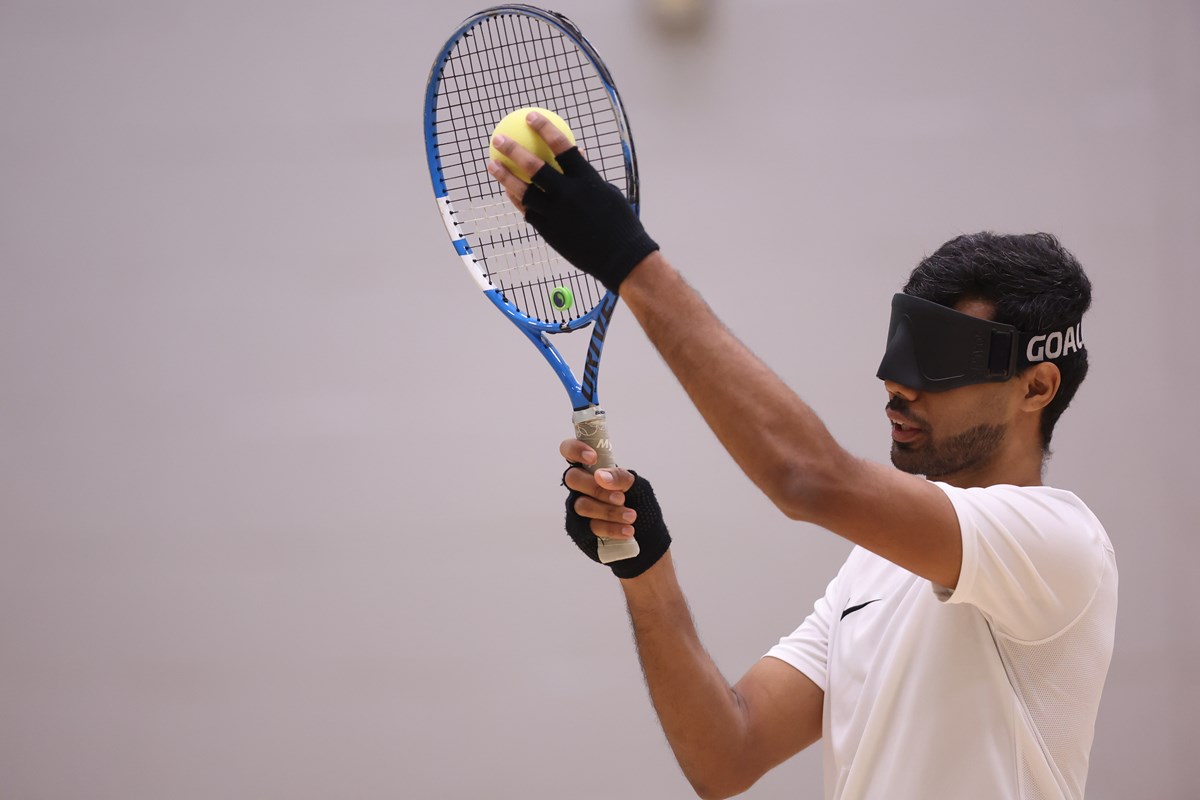Inclusive Versions of the Game

There are many adapted variations of the game to ensure that tennis can be involved by all. See below for information on each of these.
Coaching tip guides and further resources for each of these can be found in the resources section.
It’s the most integrative and professional of all para-based sports, and we reckon it’s the most fun too –welcome to wheelchair tennis.
For those new to the game of tennis, there is only one major rule change: wheelchair tennis players are allowed up to two bounces of the ball with only the first bounce needing to be within the lines of the court.
Why wheelchair tennis?
Wheelchair tennis provides fantastic personal and development opportunities for children, young people, and adults, including:
- Play socially with friends, family, and an opportunity to meet new people,
- Chance represent Great Britain at Grand Slams, ITF Wheelchair Tennis Tour, and Paralympic Games,
- Become a qualified tennis coach and,
- Be a role model and ambassador to get more people into the sport.
When it comes to tennis, a learning disability includes conditions such as Down’s Syndrome, Asperger’s Syndrome, Autistic Spectrum Disorder(ASD) and Attention Deficit Hyperactivity Disorder (ADHD). We understand that each person’s learning disability has different symptoms and characteristics, so our expert coaches tailoreach session to suit their client’s needs.
Who can compete in Learning Disability tennis?
For those looking to compete, criteria for entry are connected to the person’s IQ, with anyone with an IQ of less than 75 eligible.
Want to start competing? Check out our Disability Competitions Calendar to find out how you can get involved.
Who knows, you could even end up representing Great Britain at the Special Olympics or compete at the Virtus World Championships!
Sensory tennis is a set of activities designed by Sense and the LTA in partnership to make tennis accessible for people with complex disabilities.
There are lots of ways to make tennis more inclusive for disabled people –you can make adaptations like using a ball with a bell in it, or making the court smaller. For people with complex disabilities, it’s often the concept of rules, tactics and aims of the game that can be a barrier to participating.
The Sensory Tennis Toolkit, from Sense, gives coaches and volunteers all the information they need with regards to running sessions. Our sensory tennis sessions break the sport down into more meaningful chunks of activity.
Deafness is the condition of having impaired hearing. The word deaf is used to describe or identify anyone who has a severe hearing problem. Sometimes it is used to refer to people who are severely hard of hearing too. Deafness is a hidden impairment, and it is sometimes hard to know whether someone has a hearing impairment and that they may require additional communication support.
People who are deaf have different levels of hearing loss, from mild to profound deafness –but everyone is welcome in tennis. Every deaf person is different with some being hearing aid users and others having a cochlear implant, and some may sign, some may lipread, some may listen, and some may speak. Some may well do all of these.
Who can compete in deaf tennis?
To be eligible, a player has to have an average hearing loss of 55dB or more in their best ear – find out more about hearing loss here.
When competing players must remove cochlear implants and hearing aids before starting the warm-up before the match. Failure to do so will mean disqualification. The reason for this is to allow it to be an even playing field for all.
Deaf tennis has a long history in Tennis in Britain and playing the sport requires little adaptations. The vital and most important adaptation is making sure that communication is clear between players, coaches and officials.
People can play against other deaf tennis players, and alongside or against non-deaf players, friends and family.
Join the community
The LTA's Deaf Tennis Community Group is a group for anyone who is interest in or involved in the Deaf tennis community in the UK, from parents and players to coaches and officials.
(4) Deaf Tennis Community Group | Facebook
Visually Impaired tennis (also known as VI tennis, Sound tennis or Blind tennis) is one of the leading sports for blind and partially sighted people in the UK.
This format of the game is different to traditional tennis – it's played on a smaller court with a lower net. Some courts also have tactile lines (B1 only) - so players can touch them- and players also use an audible tennis ball that makes noise so they can hear it bounce and being hit.
Who can compete in Visually Impaired tennis?
VI tennis is open to players of all ages, experience, fitness levels and abilities who have a visual impairment. There are also adaptations that allow families to play together.
In VI tennis players compete in different categories, with the B1 category having the greatest degree of sight loss. Depending on a player’s category they may have up to three bounces of the ball before they return it back to their opponent.
VI tennis categories
- B1 –No sight, players are allowed three bounces of the ball and nets are lowered
- B2 –Partial sight and players are allowed three bounces of the ball
- B3 –Partial sight and players are allowed two bounces of the ball
- B4 and B5 –Partial sight and are allowed one bounce of the ball
VI tennis balls
Our partner LUSU have VI balls available for purchase. They've brought these in bulk and sell them to VI tennis players and coaches at cost price to help us further open up tennis. You can access VI balls below:
VI Sound Tennis Ball -Tennis Ball for Visually Impaired (lususports.com)
